instalment 12: my grocery shopping list
As you will have gathered from the earlier instalments, I tend to avoid protein foods, especially those of animal origin. When Helen and I first started on a low-methionine diet in 2012, we had to look up the methionine content for the various foods we contemplated eating in order to make choices. The go-to database for this sort of information is the Unites States Department of Agriculture (USDA) nutrient database. Their web interface these days is much more user-friendly than it was in 2012 when, to make our lives easier, I put together a FileMaker app which made looking up the nutrients we were interested in, less burdensome.
Fresh produce section
Asparagus, avocados, bitter melon, bok choy, broccoli, Brussels sprouts, cauliflower, celery, mushrooms (I prefer Cremini!), fennel, garlic, ginger, green beans, green onions, kale, onions (yellow), peppers, potatoes, shallots, snow peas, spinach…
Dairy
35% whipping cream (organic, no ingredients other than cream); butter.
Canned and dry goods
Cornmeal (#120), fava beans (dry or canned), flageolet beans, Laird green lentils, basmati rice, black rice, buckwheat groats, kasha, La Costeña whole black beans, organic vegetable broth.
Pasta and noodles
La Veneziane corn pasta, King Soba 100% buckwheat noodles, konjac noodles, rice vermicelli.
Bakery
Note: avoid anything containing wheat!
Mestemacher organic three grain bread, Ryvita dark rye crispbread, Wasa hearty rye or sourdough rye crispbread, Ilios organic rice or corn-rice cakes.
Oils, dressings, condiments
Avocado oil, extra virgin olive oil, Hellman’s olive oil mayonnaise (not the low-fat kind!), balsamic vinegar, Bragg all purpose soy seasoning, A. Vogel Herbamare spicy organic herbed sea salt.
Beverages
Beer (I avoid craft beers, as the high purine content can trigger an attack of gout); red wine; carbonated water (I drink about 3L per day, and carbonate it myself); ginger lemon tea, ginger turmeric tea, dark roast coffee beans (eg Starbucks French Roast or Sumatra).
Snacks
Miss Vickie’s Original potato chips, Montreal Nacho tortilla chips, tamari almonds, La Morena red mexican salsa…
Typical meals
A typical meal will consist of a vegetable accompanied by a carb such as baby potatoes (fried with some olive oil in the air fryer), basmati or black rice, buckwheat groats, kasha, or noodles (corn, rice, or buckwheat). I often only eat twice daily (the easy version of intermittent fasting). Instead of a vegetable, I might have soup.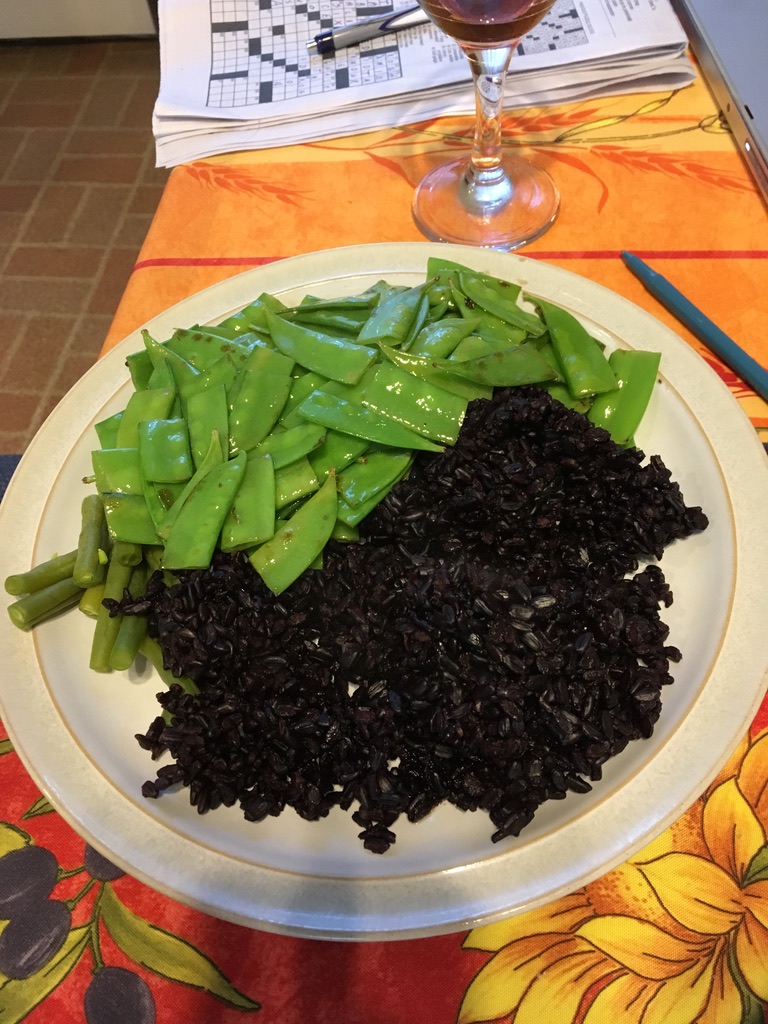
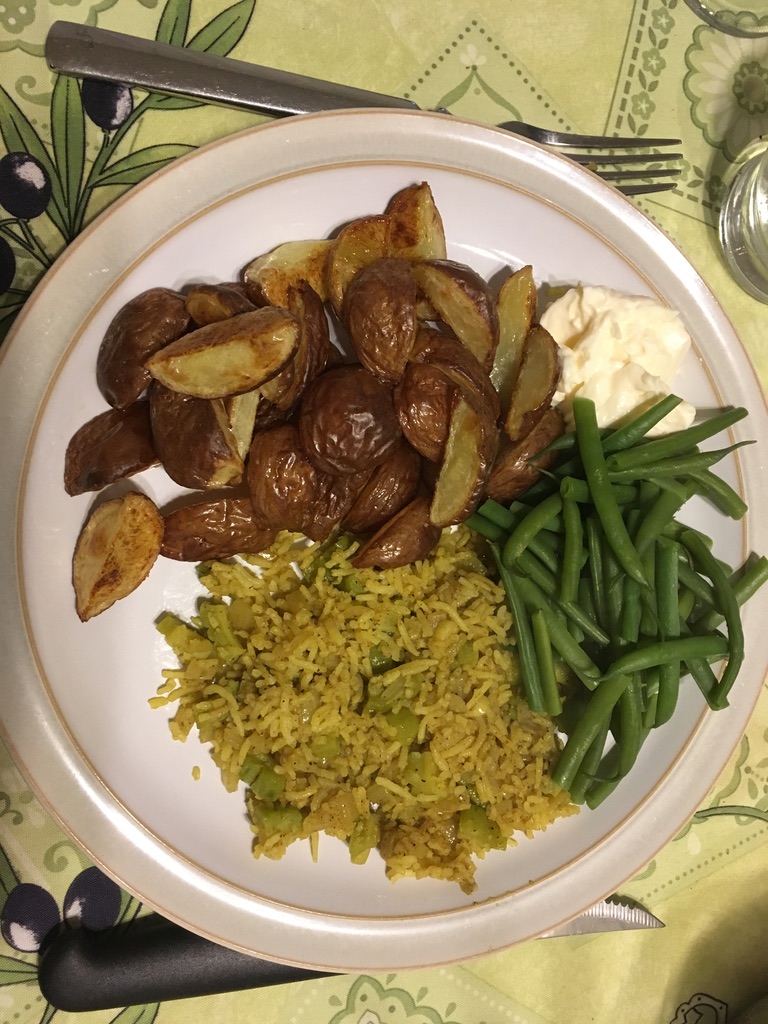
Avocado on Mestemacher three grain bread, toasted, and seasoned with hot curry powder and fresh ground black pepper, perhaps topped with cherry tomato halves, makes an easy to prepare meal.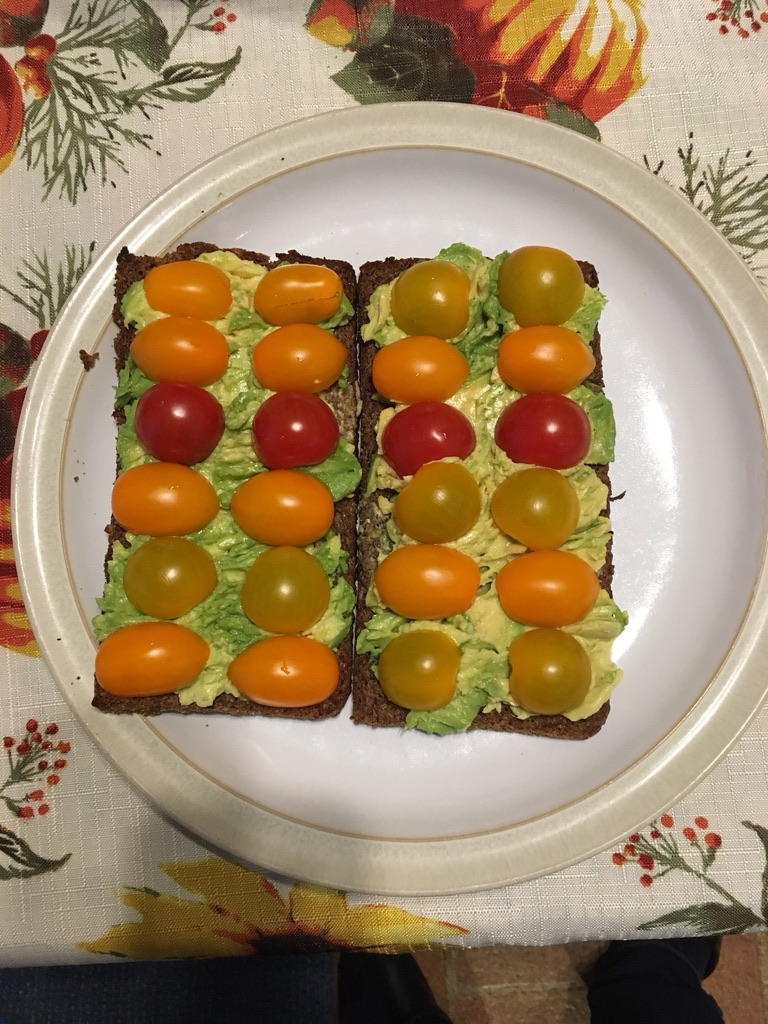
Of course, more elaborate meals are always an option…

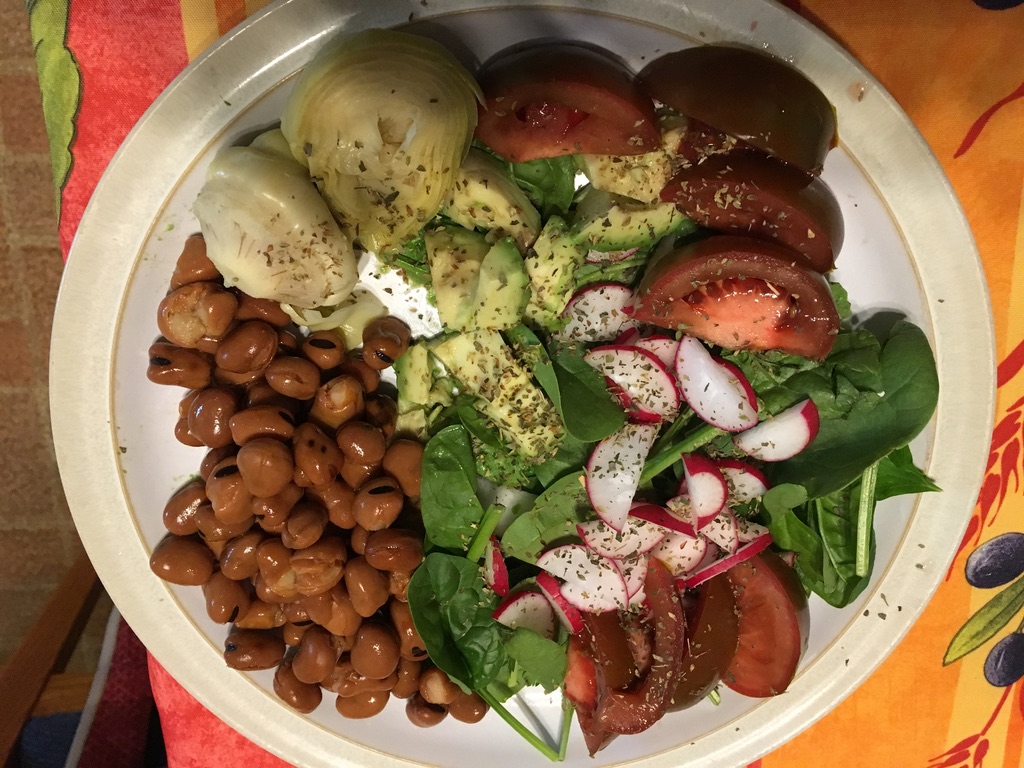

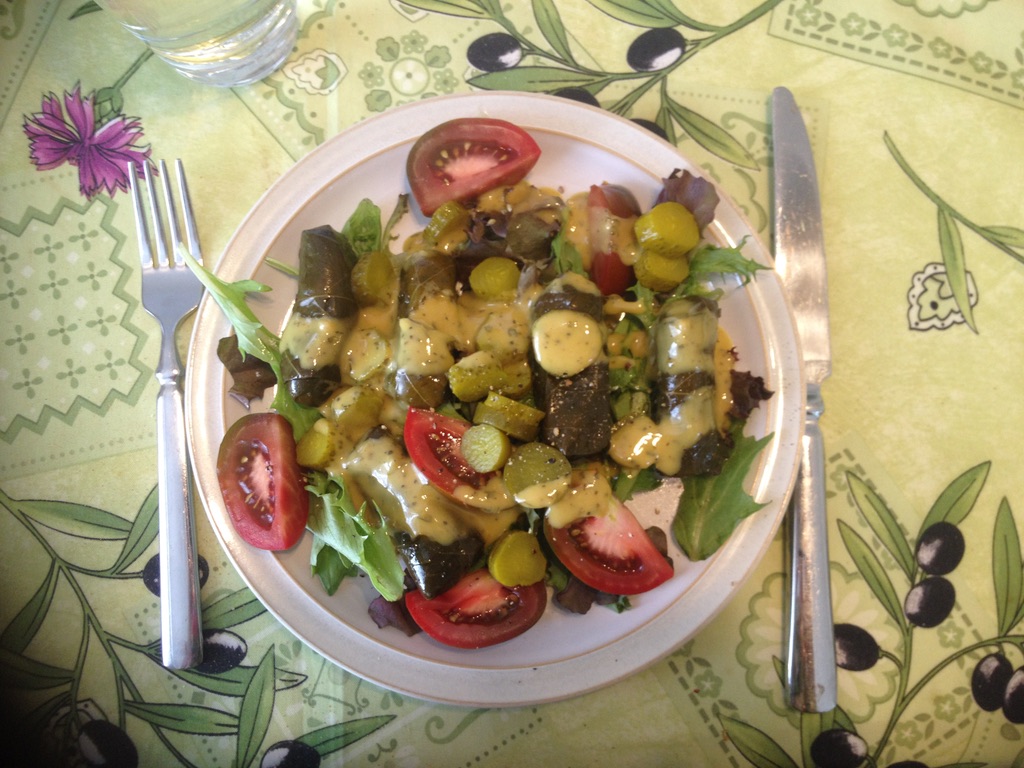
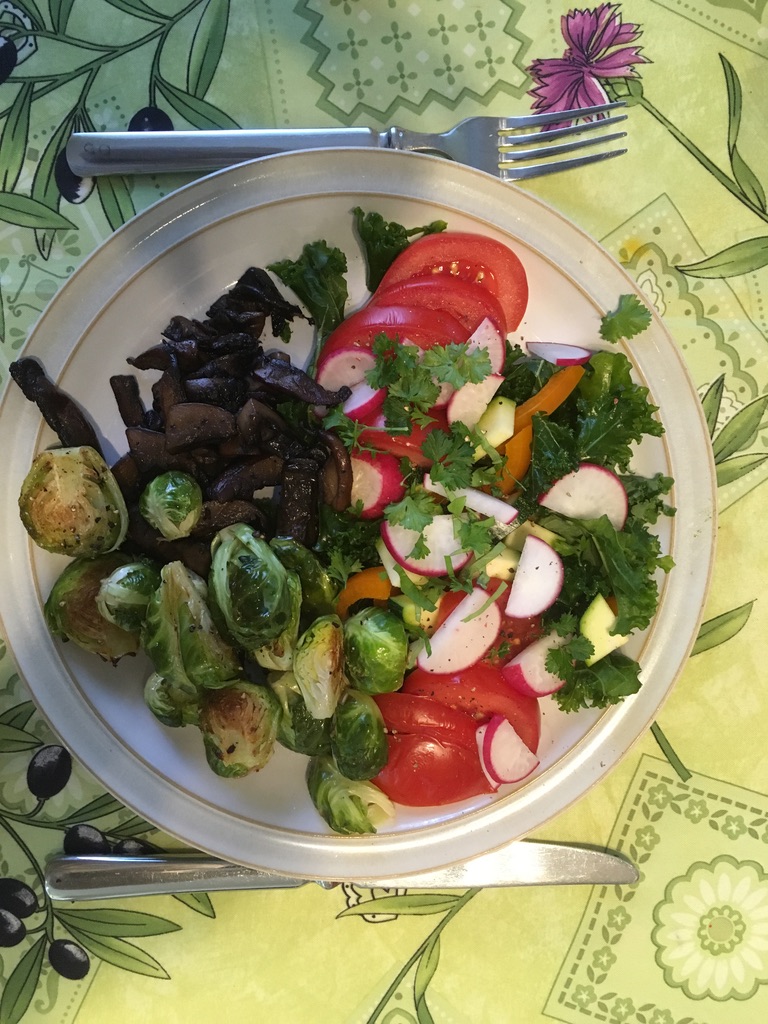
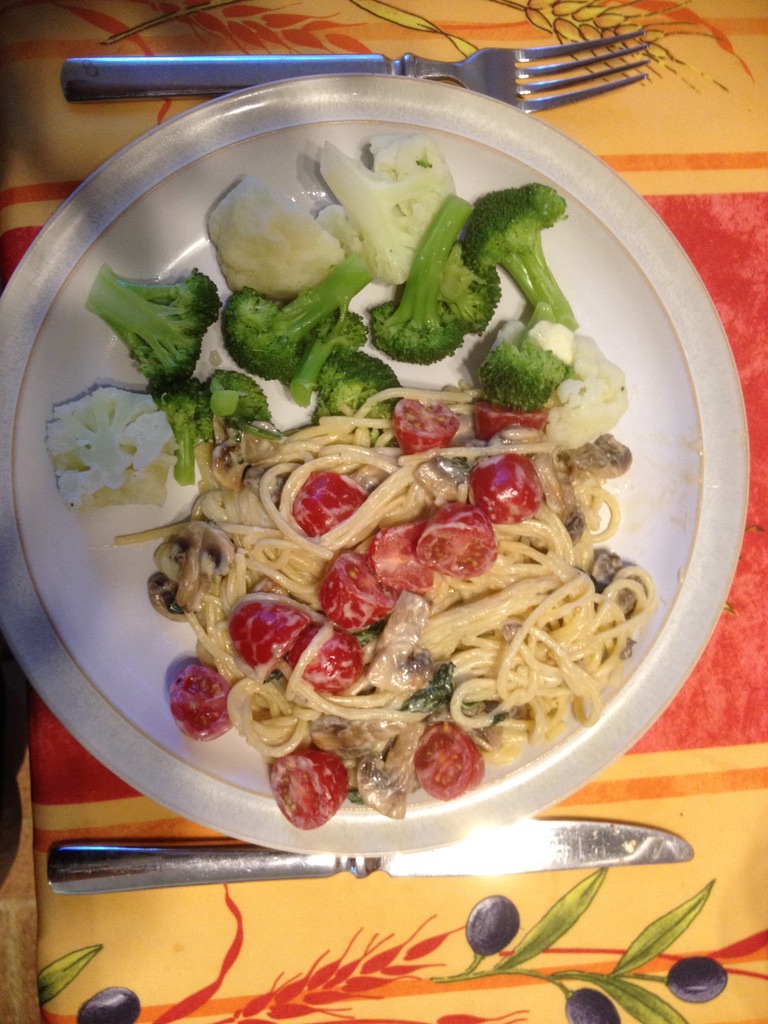

Make-ahead recipes
A couple of times a week, I may make a larger quantity of a recipe to keep in the fridge, to provide for several meals.
stir fry
Ginger, sliced fennel stalks, garlic, sliced celery, snow peas, cut-up peppers, cut-up fennel bulb, green onion pieces) made in a plain steel wok with lots of avocado oil for frying. Ingredients are added in the order above; at the end, add one or two packages of konjac noodles. Season with Herbamare sea salt and Bragg all purpose soy seasoning. Here’s a photo of stir fry ingredients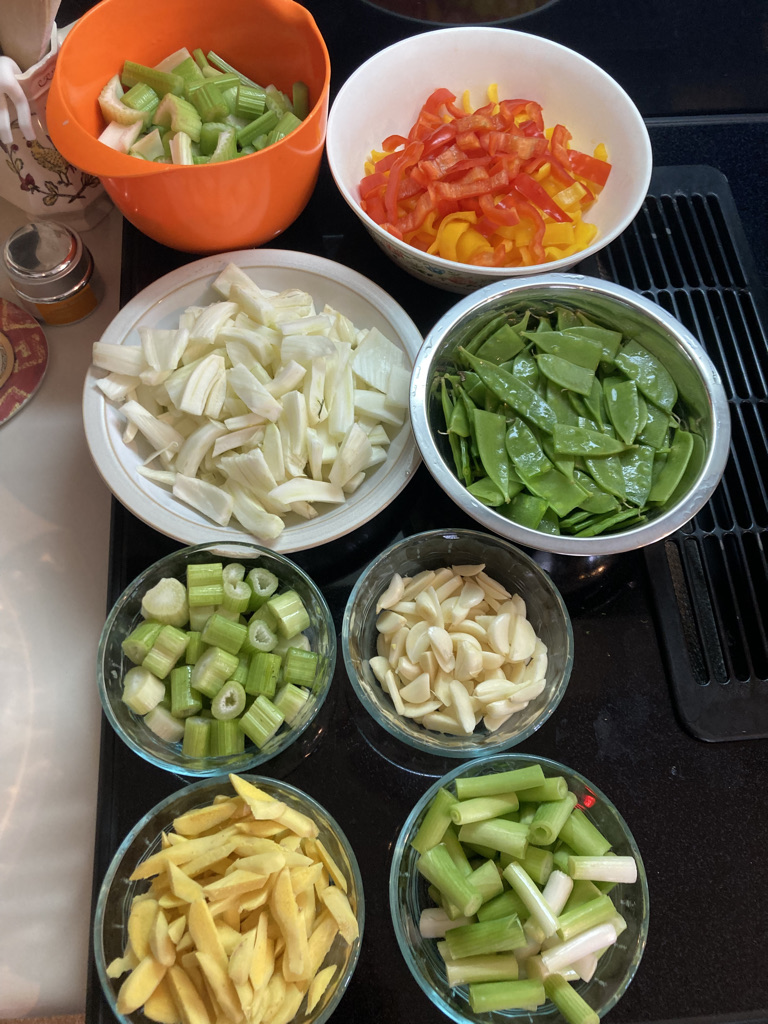
soups
Caldo verde (potatoes, onion, kale/leek/swiss chard)
Curry lentil soup (lentils, ginger, garlic, onion, cumin, coriander, turmeric, hot chili flakes)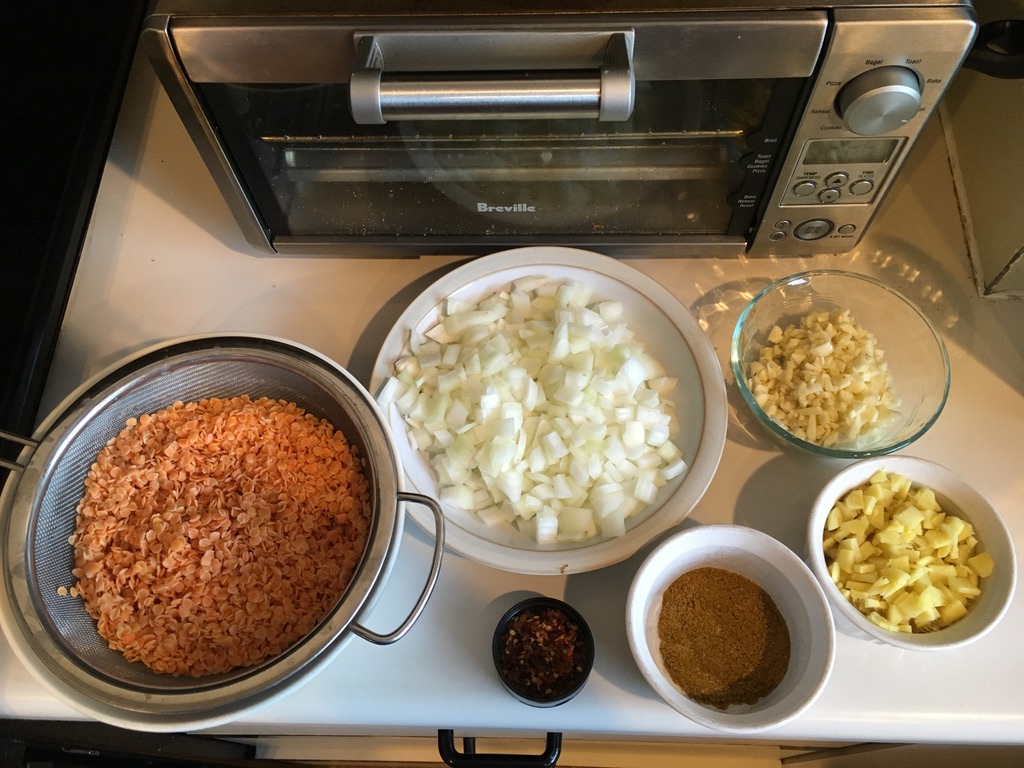
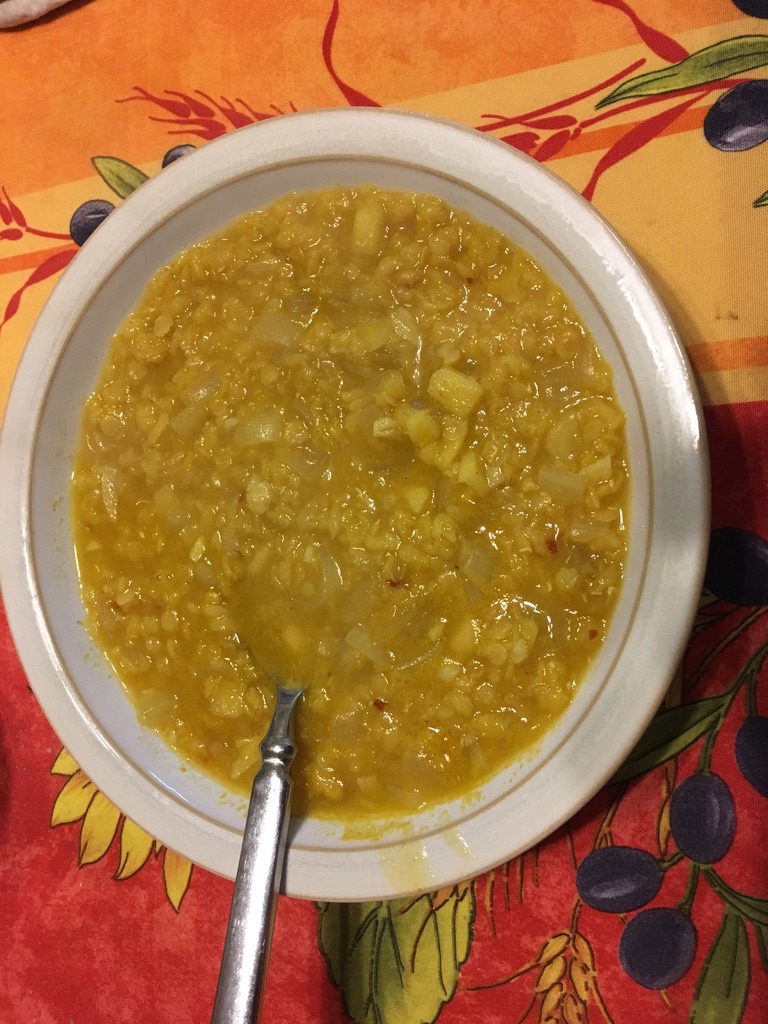
Green goddess soup (parsnips, cauliflower, onion, garlic, kale, spinach, broccoli). Photo of ingredients 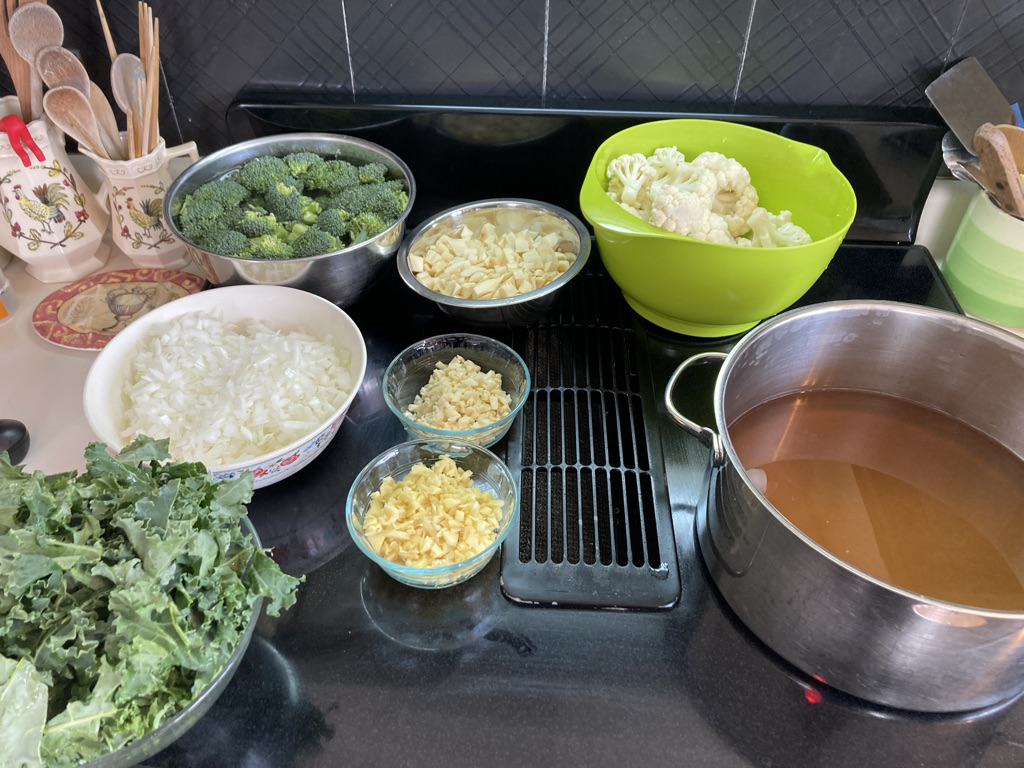
Cauliflower and roasted garlic soap
polenta
Made with corn meal, butter, smoked paprika and hot chili flakes in a slow cooker. After cooling, I cut into slices which go into a container in the fridge. Fry several slices for a tasty carb side, eg with avocados or asparagus.
Helen’s corn pasta mushroom dish
La Veneziane corn pasta, crimini mushrooms, 35% whipping cream, fresh baby spinach, smoked paprika, Bragg all purpose seasoning, Dijon mustard. My granddaughter always requests this when she comes for lunch.
Bitter melon and rice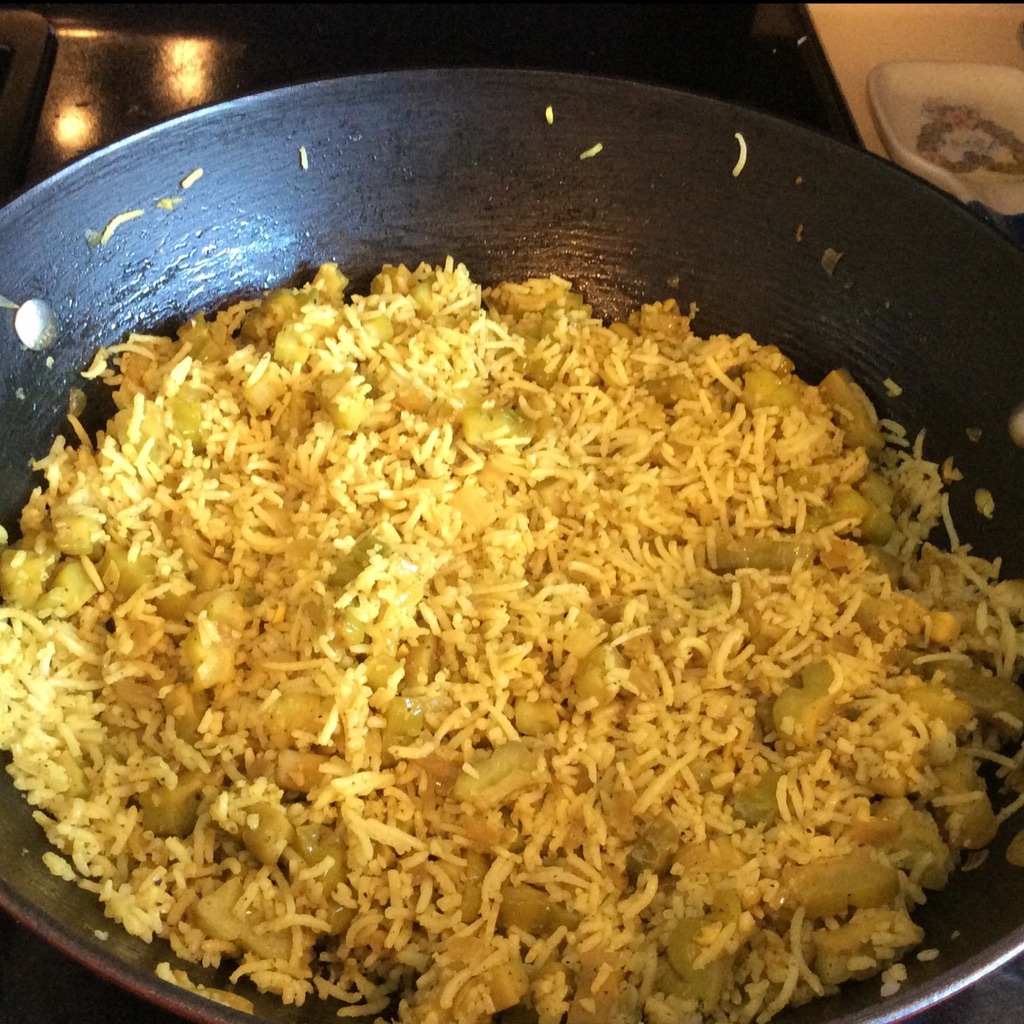
Gout: a special case
I’ve had three gout attacks involving my right big toe in the last several years. While I don’t know what triggered the first attack, the second was caused by rapid weight loss, and the third by drinking just one craft beer!
Gout is caused by an excess of uric acid (urate) in the system, which can then form crystals in various places, including the joint of the big toe. Crystals in the joint cause inflammation and pain.
Excess uric acid can be due to excessive dietary intake of purines, insufficient urinary excretion of uric acid, or both.
Purines include a number of substances found in the diet, but two important purines are adenine and guanine; thus, two out of the five nucleic acids which are the building blocks of DNA and RNA are purines. Since every cell (except for red blood cells) has a full complement of DNA and RNA, the implication is that foods which have high concentrations of cells are also high in purines. Meats have a high concentration of cells, and organ meats (liver, kidney, pancreas, thymus, heart, brain) have the highest concentration. This may have led to the traditional association of rich diets with gout.
Insufficient urinary excretion of uric acid is probably the more important cause of gout, however. Studies have shown that a less acid urine (higher pH) permits more urinary excretion of uric acid, compared to more acid urine. Since the acidity of urine is dependent on what foods we eat, choosing a diet for its effect on urine acidity may be more important that a diet low in purines.
A particular food’s effect on urine acidity is not necessarily through the acidity of the food itself. Rather, the concentration of sulfur-containing amino acids (methionine and cysteine) in the food is a major determinant of how much acid is generated through metabolism of that food, and therefore of how much acid is excreted in the urine. On the other hand, cations such as magnesium, calcium, and potassium also found in foods, buffer acids and make the urine less acidic (raise the pH). Phosphorus and chlorine are anions which lower pH. Finally, many foods contain significant quantities of phenols, which after metabolism are ultimately excreted in the urine as hippuric acid.
There are charts on the internet and elsewhere of acid foods vs alkaline foods. Most of the time, this refers to the capacity of the food in question to raise or lower the acidity of urine, and not to the inherent acidity of the food itself. For example, lemons are rich in citric acid, yet are considered an alkaline food. Unfortunately, much of the information on the internet about acid and alkaline food is misleading, and sometimes just plain wrong. Many web articles talk about the acid content of the food, or the effect of food on acidifying the blood. The important issue is neither of these: we need to focus on the effect that food composition has on how much acid is generated by its metabolism, and therefore on how much acid has to be eliminated in the urine.
In terms of gout, other elements of food composition besides acid or alkaline can affect uric acid levels. For example, high levels of dietary fructose contribute to raising uric acid levels1. Traditional foods considered part of rich diets, such as honey, dates, and raisins, are high in fructose. In modern times, various soft drinks and other processed foods are sweetened with high-fructose corn syrup.
Another factor related to diet is how much insulin is secreted. It appears that insulin stimulates the kidney to reduce uric acid excretion. Almost all the recommendations in this essay are based on reducing insulin levels, so following those recommendations should reduce your risk of gout.
And of course, the pain caused by a gout attack is due to inflammation, so if you already have gout, following the anti-inflammatory recommendations in this essay may reduce your pain and shorten its duration.
Final words
Astute readers will have noted several inconsistencies in my essay. For example, my advice to eat more fatty fish conflicts with my advice to eat less protein, especially animal-based protein. How do I resolve these inconsistencies?
In the case of omega-3 fatty acids, there are other ways to get these besides eating fatty fish (or even taking fish oil capsules!). So I come down on the side of less protein. Consider that a typical adult loses only about 7 g protein per day2, so we only need to make up that 7 g in our diet. And believe me, it’s difficult, even eating only plant-based foods, to get my daily protein intake below about 50 g!
I’ve been working on an essay about dietary protein, an important topic all by itself. I’m pretty certain that the official government recommendations for dietary protein intake, whether Canadian, US, or the European Union, are way high, and are based on bad science. Following those recommendations is worsening our health as well as that of the planet, and contributes to income inequality. So stay tuned!
And, an addendum!
(Added in September 2024)
I continue to research this whole business, because my understanding remains incomplete. While we know that various plant-based foods reduce insulin levels, we still don’t know how. The same is true for medications like metformin, semaglutide, liraglutide, etc.
We know that eating indigestible carbohydrates (fibre) such as inulin (see instalment 2), changes the composition of our gut microbiome, encouraging the growth of bacteria which can ferment the fibre, turning it into anti-inflammatory short chain fatty acids such as butyrate. This has been much studied, but the focus in humans has been on the bacteria in the large intestine, which is easy to study by looking at fecal samples.
But consider this: what if certain foodstuffs are able to modify the bacterial makeup in our small intestine, eg in the first segment, the jejunum? The jejunum is where absorption of glucose takes place; the absorbed glucose molecules stimulate the secretion of insulin.
Suppose that the jejunum microbiome was rich in bacteria able to ferment glucose. Three things would happen:
- The products of glucose fermentation include anti-inflammatory short chain fatty acids (SCFAs) such as butyrate which are absorbed and can reduce inflammation elsewhere in the body;
- Because the SCFAs produced by fermentation have only about one-third the energy content (1.5 kCal/g, compared to 4 kCal/g for glucose), less energy is available to be absorbed, which can help weight maintenance or weight loss.
- The glucose molecules which get fermented are no longer available to be absorbed, and so will not stimulate insulin secretion.
You should ask, what happens to that excess energy when glucose is fermented to SCFAs? The fermentation products include two gases, methane and hydrogen, which carry off the excess energy. Methane is eliminated from the gut by burping and farting, while hydrogen is absorbed into the bloodstream from where it is breathed out via the lungs.
While it is known that metformin, an inexpensive medication used to treat type 2 diabetes, lowers insulin (which also makes it useful for weight loss), it isn’t clear how this happens, with a variety of possible explanations having been posited. In animal models, however, it has been shown that metformin alters the bacterial composition in the jejunum3 towards more fermentation.
It is possible that some foods which also lower insulin levels may have similar effects on the jejunal microbiome, either directly by their constituents such as polyphenols or anthocyanins, or through microRNA. This last is a whole new area of study which I discuss in this essay.
- Lecoultre V, Egli L, Theytaz F, Despland C, Schneiter P, Tappy L. Fructose-induced hyperuricemia is associated with a decreased renal uric acid excretion in humans. (letter). Diabetes Care 2013;36(9):e149-50. PMID 23970726 ↩
- “Estimated obligate daily loss in body protein from the shedding of cells, secretions, and other miscellaneous functions” is “approximately 6 to 8 g/d for a 70-kg man”. from:
Institute of Medicine: Dietary reference intakes for energy, carbohydrate, fiber, fat, fatty acids, cholesterol, protein, and amino acids. Washington, DC: National Academies Press; 2002; p278. Download pdf here ↩ - Rodriguez J, Hiel S, Delzenne NM. Metformin: old friend, new ways of action-implication of the gut microbiome. Curr Opin Clin Nutr Metab Care. 2018;21:294-301. PMID [29634493] ↩
- instalment 11: don’t stress about stress!
- Quebec healthcare mismanagement is greater problem than unvaccinated
One thought on “instalment 12: my grocery shopping list”
Leave a Reply
You must be logged in to post a comment.
Pingback: instalment 11: don’t stress about stress! – henry.olders.ca